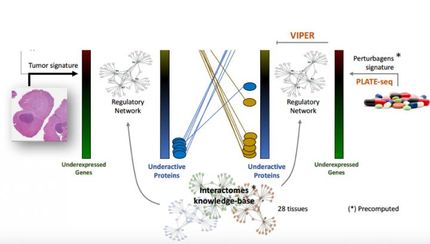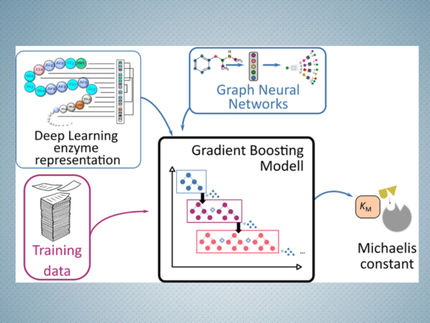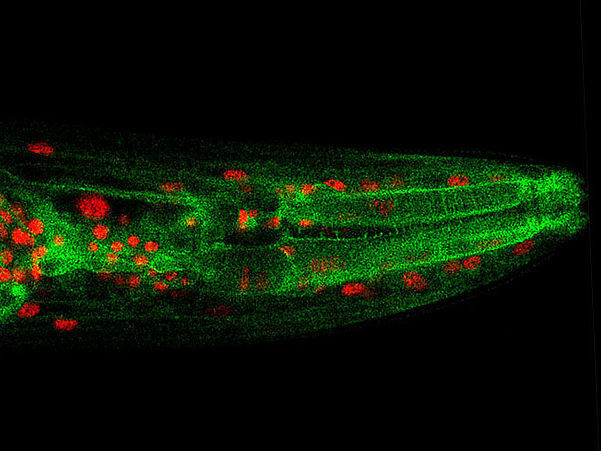New high-throughput screening technique makes probing puzzling proteins possible
Research will allow identification of numerous potential cancer and other treatments
Advertisement
Understanding the tens of thousands of proteins that compose the human proteome has emerged as a key challenge of this century, and research efforts to date have already enabled major advances in drug discovery and understanding basic biology. But many potential avenues have been blocked by lack of information about how the majority of these proteins function. The bulk of these so far enigmatic proteins may now be open to study, thanks to research by a team at The Scripps Research Institute and its Molecular Screening Center.
The scientists have developed the first widely applicable high-throughput screening technique that works even with proteins about which little is known, enabling searches for the molecules these proteins interact with, and for inhibitors that might block, the proteins' activity. Already, the new technique, described in Nature Biotechnology , has allowed the team to identify inhibitors for two enzymes thought to play significant roles in cancer progression.
Most studies of enzymes rely on substrate assays, which allow researchers to visibly track the enzymes' activity. Working with substrates is critical to better understand both basic cellular functioning and to identify molecules that inhibit the activity of enzymes that play critical roles in diseases such as cancer, advancing potential drug treatments.
One major hurdle in protein research, though, is that developing conventional substrate assays and related tools demands knowledge of the molecules with which a given protein binds. But such information is available for only about a third of the proteome.
"The remaining two thirds or so of these proteins are to a large extent totally uncharacterized," says Ben Cravatt, chair of the Department of Chemical Physiology at Scripps Research and corresponding author of the new study, "and that presents major challenges."
To nudge proteomics research forward, the Cravatt team several years ago developed a now widely used technique called Activity-Based Protein Profiling (ABPP). There are many variations, but the basic ABPP premise is to develop probes that attach to proteins even when their targets, or substrates, are not known, for instance by exploiting structural or mechanistic elements used by a wide range of proteins in a given class. This allows scientists to build broad-spectrum probes that will work with a whole host of uncharacterized proteins, propelling their functional analysis.
While ABPP has indeed made work with uncharacterized proteins possible, one major drawback is that the technique requires laborious gel or mass spectrometry analyses to determine the results of a given experiment, such as a screen of a particular library of compounds for inhibitory activity. Such readout techniques do not lend themselves to rapid automation, limiting screening applications to libraries of only a couple hundred or so molecules. Given that academic and corporate researchers alike now rely on high-throughput screening of up to hundreds of thousands of molecules to accomplish many of their goals, that's a severe constraint.
Now, by combining ABPP for the first time with another high-throughput detection method from the Scripps Research Molecular Screening Center, a National Institutes of Health (NIH) Roadmap-funded national center for small molecule discovery on the Jupiter, Florida and La Jolla, California campuses, the Cravatt team has eliminated this constraint. The new technique relies on the same broad-spectrum probes previously used for ABPP, but instead of gel techniques, the team has shown that it can rapidly read experimental results by instead using a technique known as fluorescence polarization.
Fluorescent molecules become excited when hit with light of one color, causing them to reemit light of a different color. The degree to which that light is polarized, in other words how well aligned those waves of emitted fluorescent light are, is largely determined by how big the fluorescing molecule is. Smaller molecules rotate more rapidly, causing their emitted light to be less polarized, so light from larger molecules is measurably more polarized.
The fluorescent probes used to tag proteins are typically quite small, so their fluorescence is not very polarized. But, when a probe attaches to a protein, together they make a much larger molecule, substantially increasing polarization, causing fluorescence polarization values to climb.
If an inhibitor binds efficiently with a given protein, it can outcompete a probe, slowing or eliminating an increase in measured fluorescence polarization. As a result, fluorescence polarization offers a quick and easy measure of successful inhibition, and it doesn't demand separation or washing steps, so the technique is readily incorporated into an automated high-throughput screening system.
Once effective inhibitors have been identified through the new technique, referred to as fluopol-ABPP, the Cravatt team then returns to well-established ABPP methods, for instance to study potentially interesting inhibitors' behavior within cells and tissues to determine which are most effective at selectively binding with an enzyme of interest.
To demonstrate fluopol-ABPP's potential, the team used it to study two enzymes from completely different classes. The first enzyme is called retinoblastoma-binding protein-9, or RBBP9. This was a particularly appropriate subject because, while RBBP9 was discovered years ago and appears to play an important role in some cancers, researchers had made no progress whatsoever in establishing the focus of RBBP9's biological activity.
"This is a great example of how challenging it can be sometimes, even with a small, simple enzyme, to identify any sort of substrate," says Cravatt, "And if you don't know what the substrate is, you're basically out of luck."
Using fluopol-ABPP, though, the team screened nearly 19,000 different compounds in search of those that might inhibit RBBP9. They identified some 20 inhibitor compounds that bound effectively with the enzyme, and further ABPP studies then revealed that one compound, an alkaloid called emetine, is especially effective. Emetine is a natural product derived from the roots of the ipecacuanha plant. It was known to have cancer-killing, or cytotoxic, properties, but by what mechanism had remained unclear.
Other news from the department science
Most read news
More news from our other portals
See the theme worlds for related content
Topic World Mass Spectrometry
Mass spectrometry enables us to detect and identify molecules and reveal their structure. Whether in chemistry, biochemistry or forensics - mass spectrometry opens up unexpected insights into the composition of our world. Immerse yourself in the fascinating world of mass spectrometry!

Topic World Mass Spectrometry
Mass spectrometry enables us to detect and identify molecules and reveal their structure. Whether in chemistry, biochemistry or forensics - mass spectrometry opens up unexpected insights into the composition of our world. Immerse yourself in the fascinating world of mass spectrometry!





























































